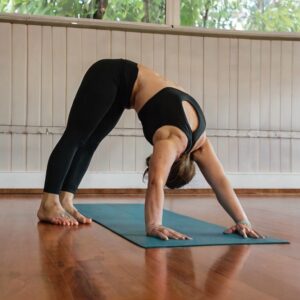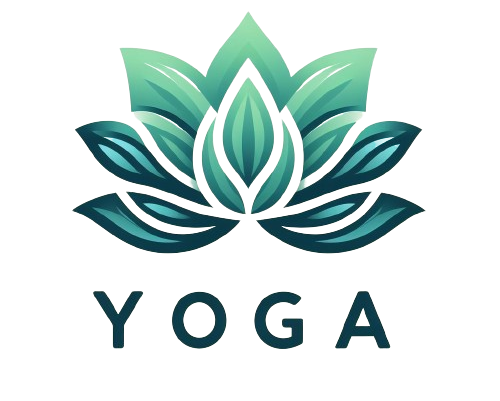Hey there, yogi friend! Ready to take your yoga game to the next level? Let’s dive deep into the world of arm balances. These poses might seem a bit intimidating at first glance, but I promise, with the right approach, even beginners can start to get the hang of them. So, if you’re just starting out or looking to refine your skills, stay with me. We’re about to unfold the secrets to nailing those arm balances and feeling like a total yoga superhero.
Core Strength is Key

Core strength is important in mastering arm balances, far beyond the superficial layers of abdominal muscles we often prioritize. When we refer to the core, we’re encompassing a comprehensive network of muscles including the intricate structures of your back, the supportive pelvic muscles, and the powerful glutes. Each of these groups functions synergistically to provide the stability and strength necessary for arm balancing poses. A robust core facilitates balance and significantly reduces the risk of injury by ensuring proper alignment and support for the spine. To fortify these core muscles, incorporating a variety of targeted exercises into your practice is essential. Engaging in planks, for instance, can enhance your overall core stability by challenging these muscles in a balanced manner. Boat poses specifically strengthen the deep abdominal muscles and hip flexors, contributing to your balance and control. Introducing other core-focused exercises, such as leg raises and Russian twists, can provide a comprehensive strengthening routine that addresses all aspects of the core. This multifaceted approach to building core strength is not just beneficial for advancing in arm balances but is crucial for overall physical health and performance in any physical activity.
Flexibility Matters
Flexibility is another factor that complements strength in executing arm balances with precision and ease. It’s essential to understand that achieving a balance between strength and flexibility allows for a broader range of motion and helps prevent injuries that might occur from straining muscles that are not adequately limber.
Practicing poses such as the downward dog offers a dual benefit of strengthening the arms and shoulders while simultaneously stretching the hamstrings, calves, and the back, promoting overall flexibility. The pigeon pose is incredibly beneficial in opening up the hips, increasing the range of motion, and alleviating tension in the lower back and hip area. It is important to approach these practices with patience and mindfulness, understanding that flexibility improves over time with consistent effort. Rather than attempting to push your body into extreme positions prematurely, focus on gradual progress and listen to your body’s signals. Gentle, consistent practice will lead to gradual improvements, allowing your muscles to stretch further and your body to move into the desired poses more freely over time. This approach ensures a sustainable practice that honors the body’s limits while steadily working to expand them.
Drill Down on Specific Arm Balances
Crow Pose (Bakasana)
A great starting point, the crow pose might look scary, but it’s all about finding that sweet balance. Here’s a quick guide:
- Start in a squat, hands flat on the ground shoulder-width apart.
- Lean forward, bringing your knees as close to your armpits as possible.
- Slowly lift your feet off the ground, balancing on your hands.
- Keep your gaze forward, and don’t forget to breathe.
Firefly Pose (Tittibhasana)
Once you’ve got the hang of the crow pose, why not challenge yourself with the firefly? This pose requires more leg flexibility and arm strength.
- Start in a forward fold.
- Place your hands on the ground, sliding them behind your heels.
- Bend your elbows to create a shelf with your upper arms.
- Lift your legs parallel to the ground.
Common Mistakes to Avoid
One of the most common pitfalls for yogis embarking on the journey of mastering arm balances is the temptation to rush the process. The enthusiasm to achieve these visually impressive poses can often lead to impatience, but need to remember that hurried attempts might hinder your progress and could also result in injuries. Arm balances are intricate poses that require not just strength and flexibility, but a deep understanding and integration of form and alignment. Diving into these challenging positions without laying down the proper groundwork can lead to poor habits that are hard to break and may potentially put undue strain on your body.
Patience plays a fundamental role in your practice as it allows for the gradual building of the necessary physical foundation, as well as the mental resilience needed to execute these poses. It’s important to approach each pose with mindfulness, paying close attention to the alignment of different parts of your body and making sure that you’re not compensating or cutting corners to achieve a certain shape. Rushing skips over these invaluable steps, leading to a shaky foundation that lacks the strength and balance needed for arm balances.
In your eagerness to progress, there’s a tendency to overlook the nuances of your foundational contact points – in this case, your hands. Recognizing them as your primary base in arm balances, a deliberate effort should be made to ground them firmly into the mat, spreading your fingers wide to distribute your weight evenly. This careful attention to your base is not a physical action but a mental check-in with your body, ensuring safety and stability as you lift into a pose.
Amidst the physical exertion and focus that come with practicing arm balances, many forget the essential element of breathing. It’s easy to hold your breath when you’re concentrating intensely or physically exerting yourself. Breath control is a cornerstone of yoga practice. Steady, even breathing aids in maintaining balance and instills a sense of calm and presence in the pose. It’s a reminder that despite the challenge, there is a flow and ease that can be found even in the most difficult arm balances. Neglecting to breathe properly can create tension and rigidity in the body, making it more difficult to find the lightness and grace that these poses can embody.
